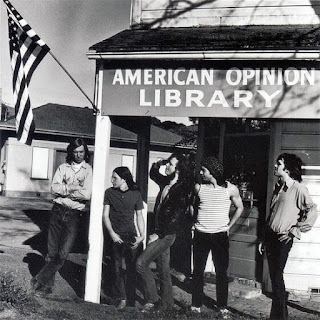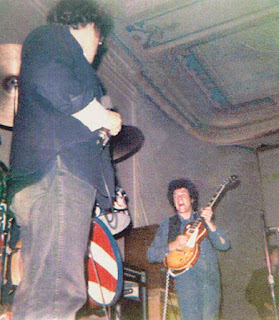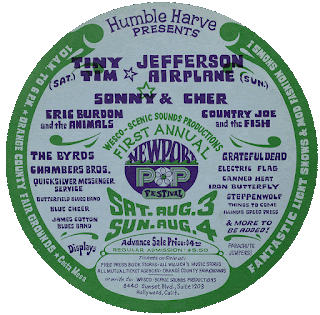The only self-titled album from New York. A highly professional and talented team, unfairly pushed into oblivion. Headed “Pig Iron” was drummer Alan Abrahams. He was also lead vocalist and main songwriter and musical director of the group.
In 1970, “Pig Iron” recorded an album which was well received by critics, but somehow went bad on sale.
Firm and publisher, as usual, did not renew the contract, and by 1971 the band broke up. Alan Abrahams went on to become a professional producer, worked at RCA, Capitol and Columbia Records, recorded by Miles Davis, BB King and many others … As for the fate of the other musicians: keyboardist-trumpeter Adam Ippolito and bassist Gary Van Scyoc trumpeter joined a group of “Plastic Ono Band”, when John Lennon finally settled in New York. Saxophonist Marty Fogel made ??a career in a group of Lou Reed. Unknown only to the further fate of no less talented members “Pig Iron”: guitarist Bill Peters and leading trumpeter Paul Squire.
Album “Pig Iron” is half of foreign things, half of your own original material written by Alan Abrahams co-authored with his colleagues, not the band. The group is very different from whales jazz-rock “Chicago” and “Blood, Sweat & Tears” by the fact that they play a more hard rock, heavily involved on the blues and rhythm and blues. This blues-rock with the active participation of the wind instruments. The album cover used the same technique of “introduction”, and that on the cover of “Led Zeppelin II”, but here the band “Pig Iron” infiltrated “the picture, taken from the collection of the museum railway” Union Pacific. “In the photo was captured historical time of the merger of two "crutches” construction of this important route to the United States, will connect the central states to the Pacific coast. band’s name, though it is in the word “Pig”, has nothing to do with pigs, but refers to the steel industry. “Pig Iron” (if literally - “pig iron”) means “pig iron” - the first pig iron smelting, intended for conversion into steel. pity that this short-term “pig iron” is not brought to a durable steel …~
Αυτό είναι το μοναδικό album που κυκλοφόρησαν εν έτη 1970, οι Hard Rockers Pig Iron από την New York (USA). Τα μέλη της μπάντας, Van Scyoc και Adam Ippolito θα συμμετάσχουν αργότερα στο σχήμα Elephant’s Memory και ο Marty Fogel αργότερα θα εμφανίζετε με το σχήμα του Lou Reed.
Ένα μεγάλο Hard Rock LP με πολλά στοιχεία από Blues και Jazz Rock, δυστυχώς ένα album που έχει σε μεγάλο βαθμό αγνοηθεί, λίγοι έως ελάχιστοι το γνωρίζουν και σίγουρα αξίζει την προσοχή σας, αν ακούτε όμως Heavy Metal με τη στενή έννοια του όρου τότε αυτό το LP, πολύ απλά δεν είναι για εσάς.
Το album αυτό από τους Pig Iron προσφέρει ένα μπρούτζινο Hard Rock ήχο στο στυλ των Chicago και των Blood, Sweat & Tears. Η μπάντα περιόδευσε στην Αμερική παίζοντας σε μεγάλα υπαίθρια φεστιβάλ, όπου headliners ήταν οι Rascals, οι Blodwyn Pig, ο Bob Seger και οι Chicago, αλλά αυτό δεν κράτησε πολύ και Pig Iron δυστυχώς διαλύθηκαν το 1971.
Ο ταλαντούχος τραγουδιστής Alan Abrahams κάνει αργότερα επιτυχία και εκτενή καριέρα με τους Pure Prairie League, την Joan Baez και τον David Cassidy μεταξύ άλλων.
Ο πληκτράς Adam Ippolito και ο μπασίστας Gary Van Scyoc θα ενταχθούν στους Elephant’s Memory τη μπάντα των John Lennon και Yoko Ono, ένα σχήμα που ήταν για το δικό τους προσωπικό μουσικό όραμα. Τελευταίος αλλά όχι λιγότερο σημαντικός, ο σαξοφωνίστας Marty Vogel είχε μια καριέρα στην μπάντα του Lou Reed, ενώ η μετέπειτα τύχη του κιθαρίστα Bill Peters και του τρομπετίστα Paul Squire, είναι ένα μυστήριο αφού κανείς δεν γνωρίζει τι έκαναν και που πήγαν.
Ο δίσκος των Pig Iron είχε πολλά θετικά στοιχεία γι’ αυτούς που αρέσκονται στο καλό ’70s Hard και Blues Rock, εξαιρετική μουσικότητα ενώ σε όλο το δίσκο και μια ικανότητα για έξυπνες, ωραίες συνθέσεις.
Η διασκευή στο τραγούδι του Screamin’ Jay Hawkins “I Put A Spell On You” είναι απολύτως μοναδική και ευχάριστη ένα μείγμα Blues με Hard Rock στοιχεία, είναι καλύτερη από το πρωτότυπο (κατά τη γνώμη μου) και οποιαδήποτε άλλη διασκευή έχετε ακούσει. Το ‘’I Can’t Make It Alone'’ είναι ένα άλλο αγαπημένο τραγούδι με μια μελωδία που ακόμα ηχεί φρέσκο και πρωτότυπο μετά από σχεδόν 45 χρόνια. Η δεύτερη πλευρά του δίσκου έχει περισσότερες μουσικές απολαύσεις, το ευχάριστο “Easy Time Now”, το “Abe’s Blues” με πολλά gospel στοιχεία και το “Top Of The World” το οποίο δεν είναι τίποτα λιγότερο από μια εκπληκτική Hard Rock και Jazzy σύνθεση. Ένας δίσκος που δεν θέλει κόπο για να ακουστεί αλλά ευχάριστη διάθεση και τρόπο….Αντώνης Δριβελόπουλος -….~
Credits
Bass [Fender], Trumpet [3rd], Vocals – Gary Van Scyoc
Lead Guitar, Vocals – Bill Peters (2)
Saxophone – Marty Fogel
Trumpet, Brass [Misc] – Paul Squire
Vocals [Lead], Drums – Alan Abrahams (2)
Vocals, Keyboards, Trumpet [2nd] – Adam Ippolito
Tracklist
A1 People Gonna Talk 3:01
A2 I Put A Spell On You 4:45
A3 Neighbor, Neighbor 2:48
A4 I Can’t Make It Alone 4:58
B1 Easy Time Now 3:18
B2 Abe’s Blues 5:20
B3 Wake Up Mr. Charlie 2:49
B4 Out Of Town 1:34
B5 Top Of The World 2:43






















































































